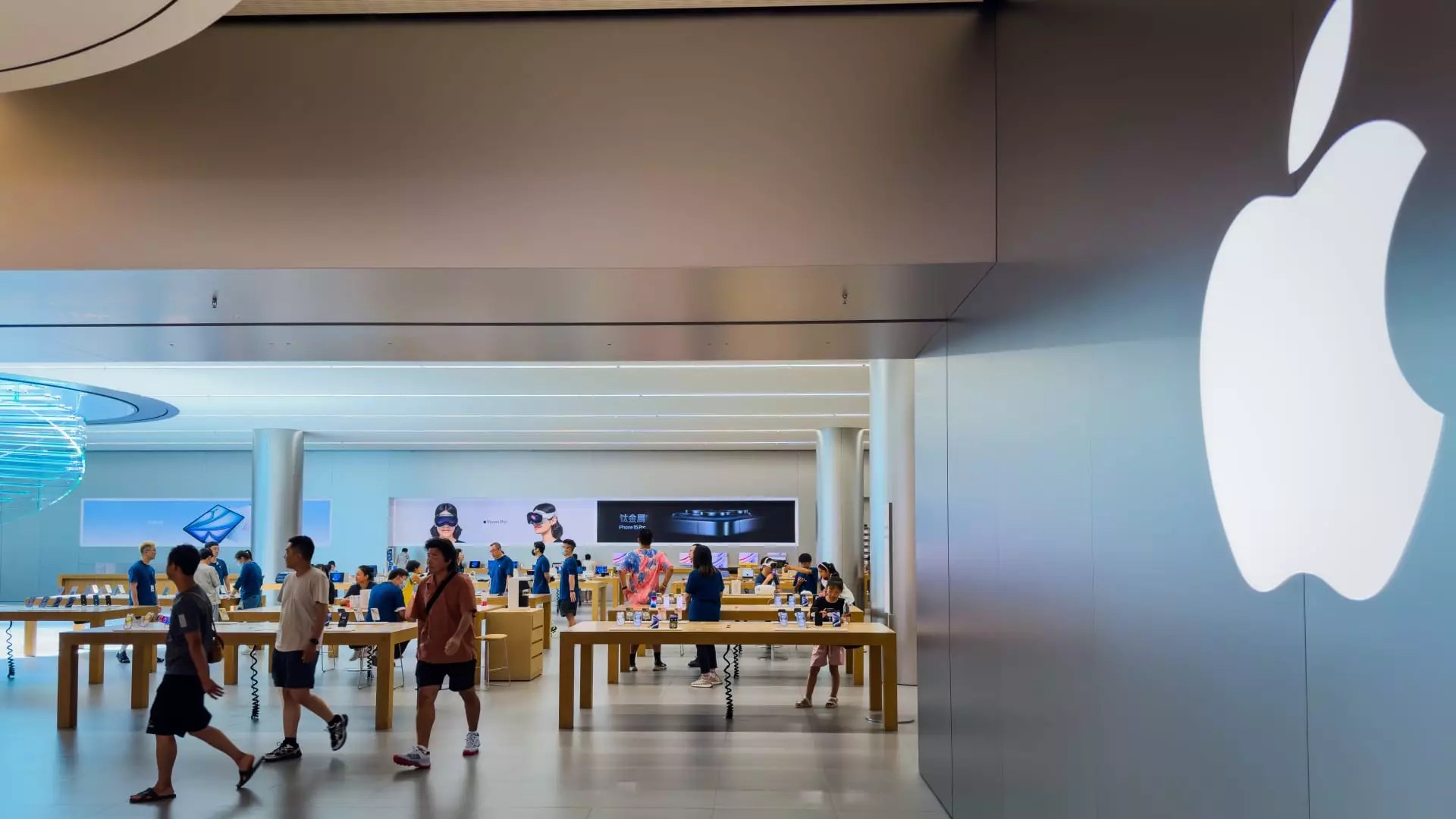The recent electoral victory of Donald Trump has ushered in discussions surrounding significant tariff policies that could alter the landscape of international trade. Trump’s proposal, which includes a broad tariff ranging between 10% and 20% on all imported goods and an astonishing 60% on Chinese products, positions various sectors on alert. Among the industries bracing for impact is the technology hardware sector, where companies are particularly sensitive to shifts in tariff regulation due to their reliance on international manufacturing. However, Tim Cook’s Apple Inc. appears to have navigated these turbulent waters more adeptly than some of its competitors, thanks in part to its robust profit margins and strategic manufacturing choices.
Contrary to popular belief that Apple’s dependence on Chinese production makes it particularly vulnerable to tariffs, analysts suggest that the tech giant’s higher gross profit margins cushion it from some of the adverse effects associated with potential tariff increases. Morgan Stanley’s analyst Erik Woodring points out that Apple may not experience significant detriment to its earnings per share (EPS) amidst tariff adjustments. This contrasts sharply with other companies in the technology sector that have thinner margins and are situated in a more precarious position regarding these punitive measures.
Historically, during Trump’s initial term, Apple successfully sidestepped the harshest impacts of tariffs due to trade arrangements that exempted essential consumer electronics from duties. In a hypothetical scenario where such exemptions are absent in the upcoming term, analysts project an EPS detriment for Apple: estimates range from a loss of 5.5% under a 15% tariff to around 9.2% for a more severe 25% tariff rate.
While Apple’s margins help mitigate immediate threats, the competitive landscape reveals a stark contrast in vulnerability among technology firms. Research from Morgan Stanley indicates that others, like Dell, could experience catastrophic impacts due to their business models and reliance on Chinese manufacturing. With predictions suggesting Dell could face up to a 90% EPS hit, it’s clear that Apple’s financial architecture allows for a more resilient posture against potential tariff ramifications.
This comparative analysis highlights a significant strength for Apple: its premium pricing strategy, which allows flexibility in adjusting costs while preserving profit margins. Analysts such as Angelo Zino note that Apple holds a unique position of pricing power, enabling them to pass some tariff costs onto consumers without facing significant declines in demand.
One of the pivotal strategies Apple may implement to counteract potential tariffs is expanding its manufacturing footprint outside of China. The company has already made strides in this direction by ramping up production in India, where they doubled their output last fiscal year. Analysts estimate that a large percentage of Apple’s products could eventually be manufactured in countries like Vietnam, Malaysia, and India, reducing their dependence on Chinese manufacturing.
This shift not only navigates the immediate tariff threats but also aligns with broader geopolitical trends favoring diversified supply chains. This strategy demonstrates Apple’s long-term vision for maintaining its competitiveness, emphasizing the company’s agility in adapting to the fluctuating trade environment.
Investors remain cautiously optimistic about Apple’s future in light of the anticipated tariffs. Bank of America analyst Wamsi Mohan characterizes the potential tariff impacts on Apple as “manageable,” assuming Apple maintains its pricing structure. Moreover, with an array of product innovations on the horizon, such as anticipated updates in iOS and the launch of the iPhone 17, investor enthusiasm remains buoyant.
The possibility exists that the incoming administration may opt to continue granting exemptions for Apple, buffering the company from anticipated tariff grievances, and fostering an environment conducive to innovation and growth. Analysts are raising price targets, reflecting confidence in Apple’s continued performance despite the looming uncertainty.
While tariff policies proposed by President-elect Trump could pose challenges for various sectors in the tech industry, Apple’s diversified strategies and strong profit margins position it to weather these storms better than its less-prepared competitors. Through expanding global manufacturing capabilities and leveraging its pricing power, Apple is poised to navigate the complexities of international trade policy while continuing to deliver value to its shareholders. In an ever-evolving market landscape, Apple’s proactive approach reflects a resilient and adaptive company ready to meet future challenges head-on.


Leave a Reply